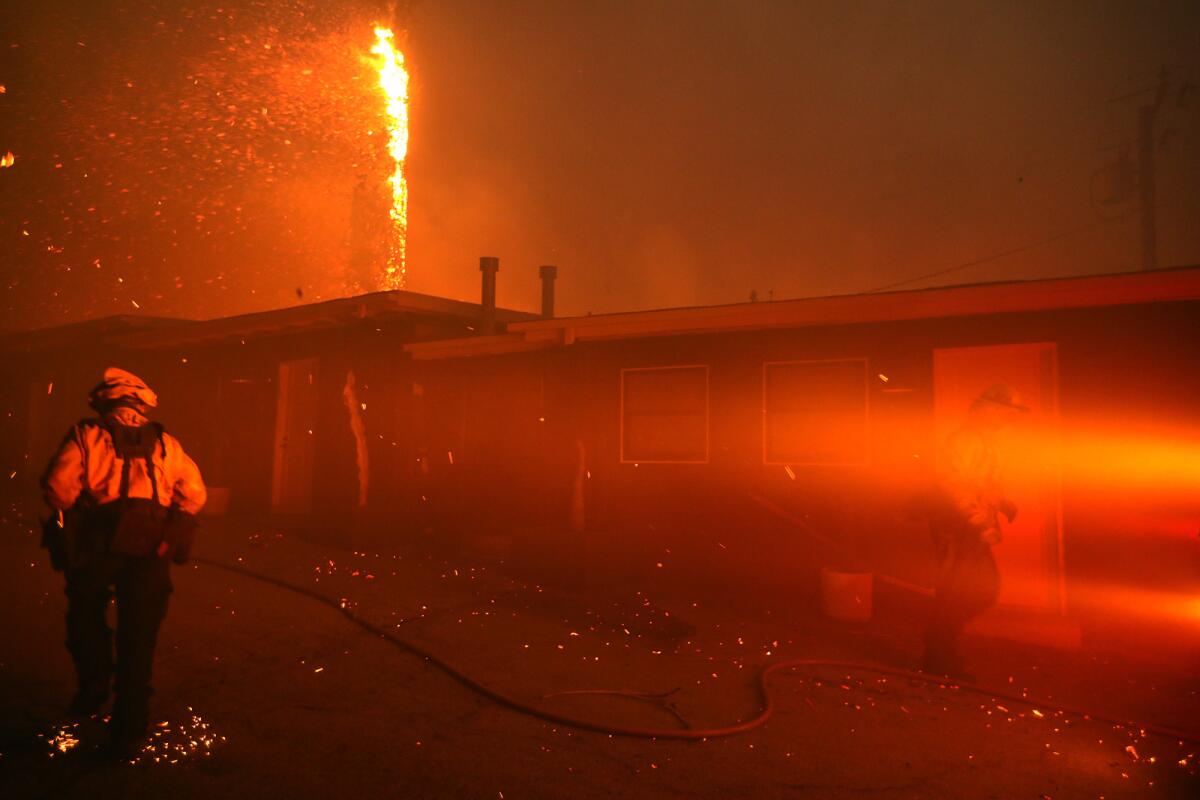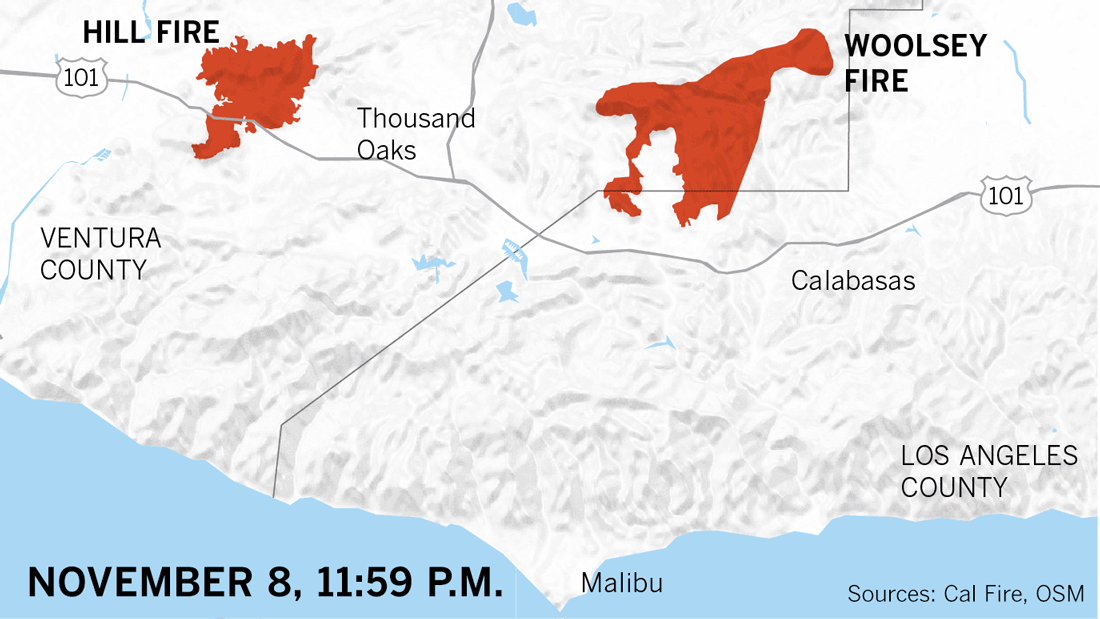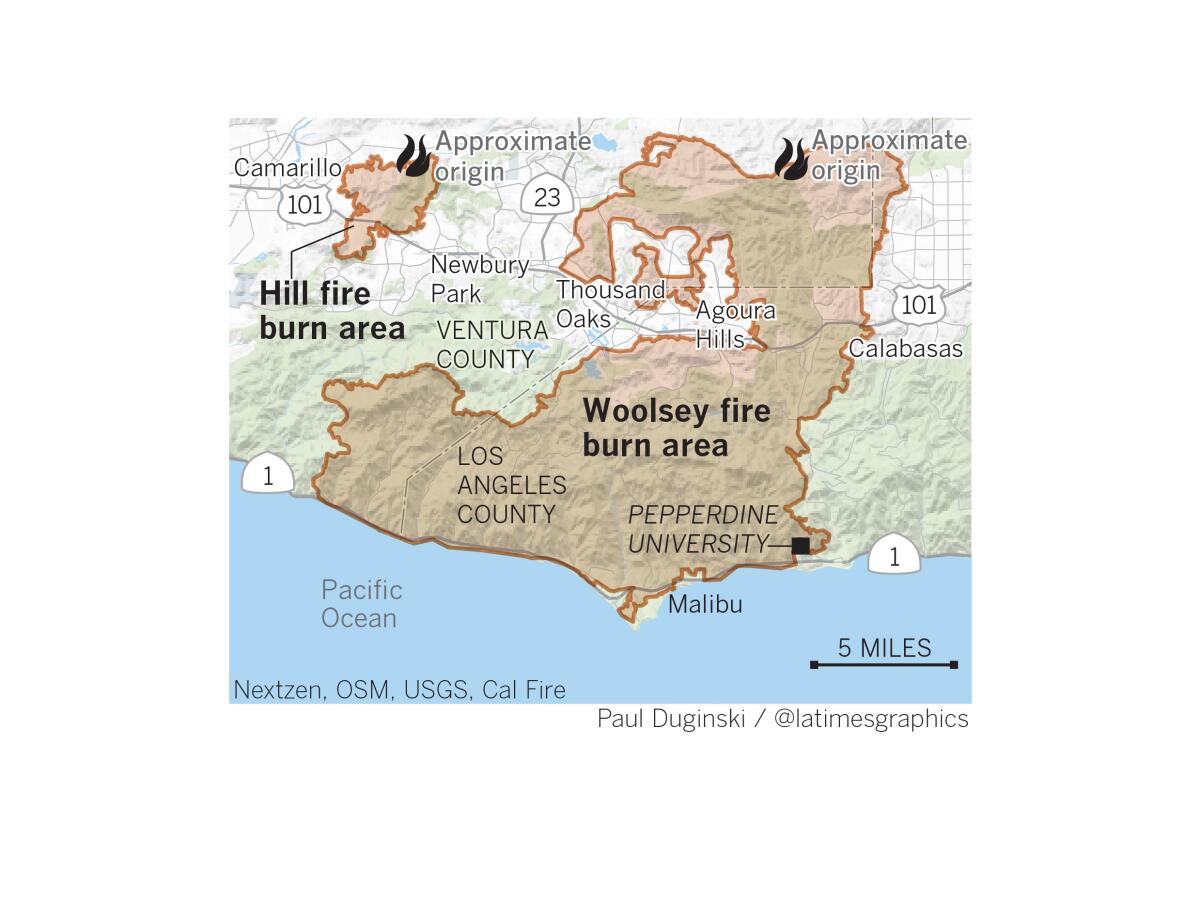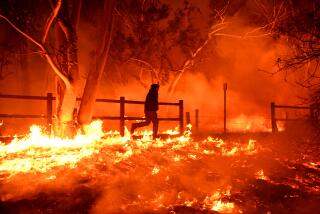First engine broke down en route to Woolsey fire, sources say. Blaze grew at a terrifying rate

- Share via
When the Woolsey fire broke out a year ago at Boeing’s shuttered nuclear and rocket engine testing site near Simi Valley, a private crew working for the aerospace giant was the closest to the flames.
A firetruck headed to the scene. But it didn’t get far.
Minutes after leaving the station, Boeing’s older-model truck puttered to a stop, sources familiar with the day’s events told the Los Angeles Times. It would prove to be just one in a chain of things that went wrong in the early battle against what would become the most destructive fire in modern Los Angeles County history.
On that day, Ventura County Fire Department crews already were busy fighting the Hill fire, which was threatening dozens of homes and businesses.

It took almost 20 minutes for the first firefighters to arrive on the scene of the Woolsey fire — which, fueled by 25 mph winds on a red flag day, was growing at a terrifying clip through rocky, hilly terrain. It would go on to burn more than 1,000 homes from Oak Park to Malibu and cause the deaths of four people.
A Times investigation earlier this year found that in the early hours of the fire, first responders’ efforts were hampered by the lack of a clear plan from incident leaders and a need for more firefighters on the front lines in Ventura County. The Los Angeles County Fire Department kept dozens of firefighters in Agoura Hills, waiting for the fire to reach their jurisdiction.
An L.A. County report released last month came to similar conclusions, noting that local fire leaders’ pleas to nearby agencies for more mutual aid help were not answered. The draft report does not mention the truck breakdown, as Boeing declined to participate because of pending litigation.
In February, residents filed a lawsuit against Boeing and Southern California Edison, alleging the companies were negligent in their duties to protect the property from catching fire.
Edison said in a recent quarterly earnings report that the company had seen a redacted draft of the Woolsey fire report in which the Ventura County Fire Department’s investigation team determined that electrical equipment owned and operated by Edison had caused the blaze. “Absent additional evidence, SCE believes that it is likely that its equipment was associated with the ignition of the Woolsey Fire,” the company wrote.
Boeing spokeswoman Chamila Nothum said in a statement that the company had security and fire personnel stationed at its Santa Susana site, and that on the day of the Woolsey fire flames were reported at two locations.
“Firefighting agencies were promptly notified, and four fire and security personnel stationed at the Santa Susana site promptly responded to the report of the fire,” Nothum said.
“Personnel stationed at the Santa Susana site continued to engage in firefighting activities and assisted county and municipal firefighters. While responding to the fire, firefighting agencies had access to water from Boeing’s property.… Boeing also took steps to notify personnel working at the site of the fire.”
A firefighter who responded to the Woolsey fire told The Times that a Boeing staff member helped guide first responders around the facility, but he did not recall working with any Boeing firefighters to combat the actual blaze.
The facility opened in 1948 when North American Aviation — which would eventually become part of Boeing — began research, development and testing of rocket engines in cooperation with the U.S. Army Air Forces, according to NASA.
Boeing says on its website that “virtually every major U.S. space program, from the first manned Mercury flights to the Apollo moon landings and Space Shuttle fleet, owns part of its success” to work completed at the 2,850-acre site in the Simi Hills.
The site and its cleanup have been the focus of multiple lawsuits in recent years, brought by environmental and public health advocates who have argued the site is in need of substantial remediation. In 1959, the site experienced the first partial nuclear meltdown in America. In 2012, a survey by the U.S. Environmental Protection Agency found hundreds of radioactive hot spots .

As part of the site’s cleanup, the facility’s large fire station was recently demolished. It sat near Southern California Edison’s electrical substation that relayed two minutes before the Woolsey fire started.
Scott Promen, 62, who worked as a firefighter at the field lab through the 1980s, said the once-robust Santa Susana fire crew used to train regularly, and occasionally would staff a nearby Ventura County fire station when that crew was on assignment.
Promen said although there’s only a fraction of the people working at the Santa Susana Field Lab, the site still has people and electrical lines, two of the most frequent causes of fires.
More to Read
Sign up for Essential California
The most important California stories and recommendations in your inbox every morning.
You may occasionally receive promotional content from the Los Angeles Times.











